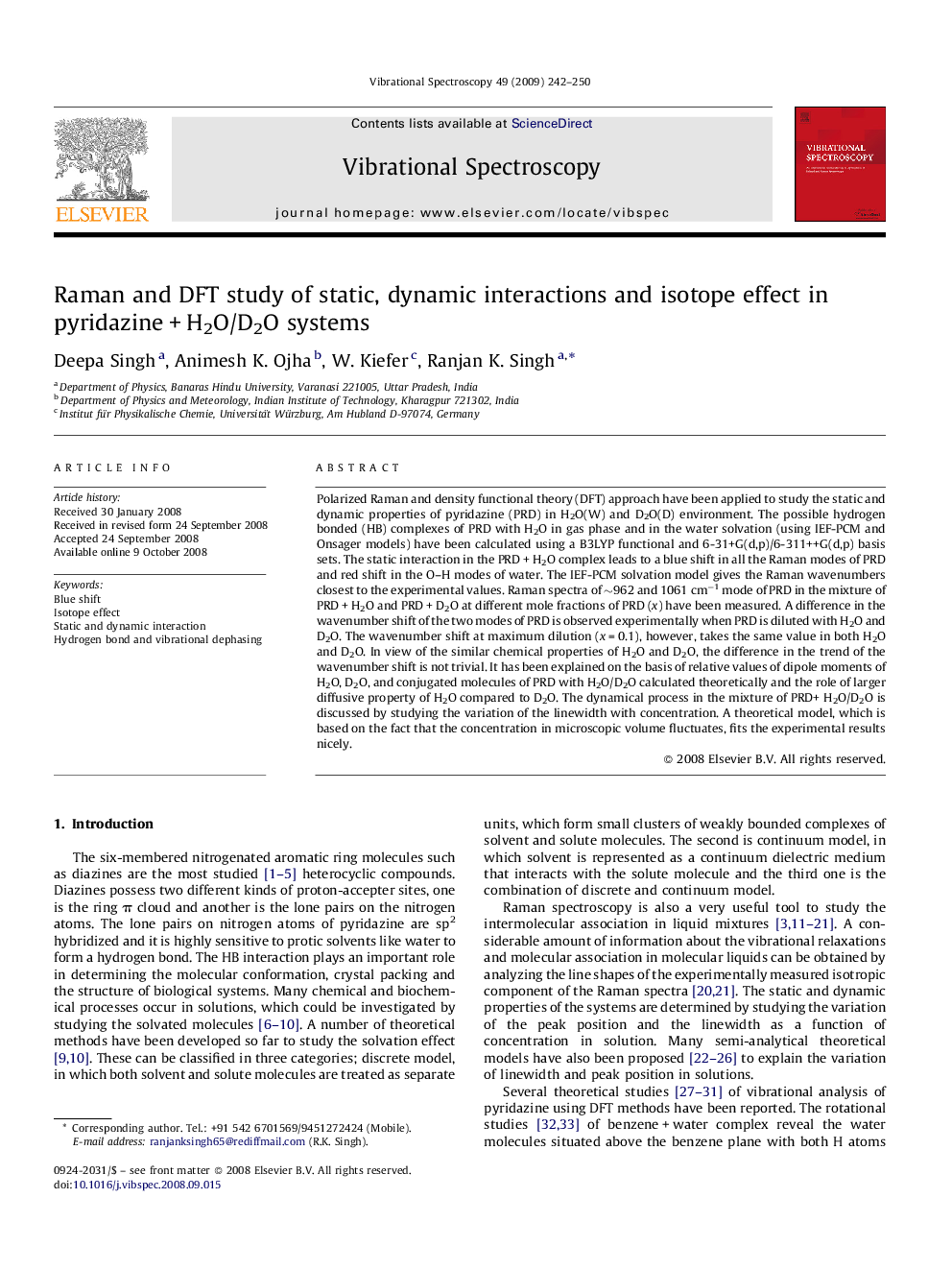| Article ID | Journal | Published Year | Pages | File Type |
|---|---|---|---|---|
| 1250343 | Vibrational Spectroscopy | 2009 | 9 Pages |
Polarized Raman and density functional theory (DFT) approach have been applied to study the static and dynamic properties of pyridazine (PRD) in H2O(W) and D2O(D) environment. The possible hydrogen bonded (HB) complexes of PRD with H2O in gas phase and in the water solvation (using IEF-PCM and Onsager models) have been calculated using a B3LYP functional and 6-31+G(d,p)/6-311++G(d,p) basis sets. The static interaction in the PRD + H2O complex leads to a blue shift in all the Raman modes of PRD and red shift in the O–H modes of water. The IEF-PCM solvation model gives the Raman wavenumbers closest to the experimental values. Raman spectra of ∼962 and 1061 cm−1 mode of PRD in the mixture of PRD + H2O and PRD + D2O at different mole fractions of PRD (x) have been measured. A difference in the wavenumber shift of the two modes of PRD is observed experimentally when PRD is diluted with H2O and D2O. The wavenumber shift at maximum dilution (x = 0.1), however, takes the same value in both H2O and D2O. In view of the similar chemical properties of H2O and D2O, the difference in the trend of the wavenumber shift is not trivial. It has been explained on the basis of relative values of dipole moments of H2O, D2O, and conjugated molecules of PRD with H2O/D2O calculated theoretically and the role of larger diffusive property of H2O compared to D2O. The dynamical process in the mixture of PRD+ H2O/D2O is discussed by studying the variation of the linewidth with concentration. A theoretical model, which is based on the fact that the concentration in microscopic volume fluctuates, fits the experimental results nicely.
